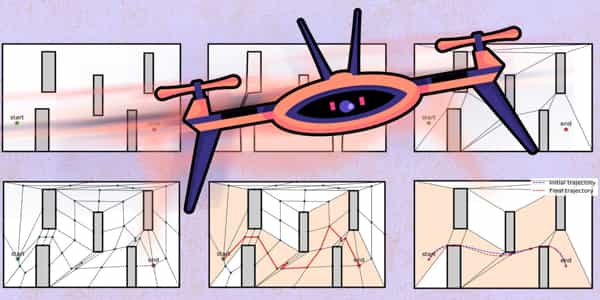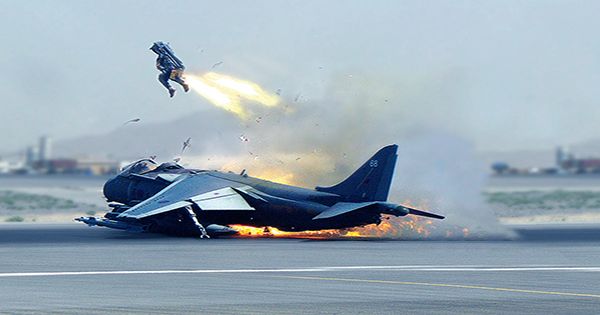Drone enthusiasts may be disappointed to learn that a new algorithm has been demonstrated to outperform human pilots in determining the quickest trajectory to guide a quadrotor — a drone with four propellers — through a circuit. The researchers had the algorithm and two human pilots fly the same quadrotor through a race circuit, using external cameras to precisely capture the motion of the drones and – in the case of the autonomous drone – to give the algorithm real-time information on where the drone was at any given time.
Drones must be quick in order to be useful. Because of their limited battery life, they must complete whatever task they are assigned – searching for survivors on a disaster site, inspecting a building, or delivering cargo – as quickly as possible.
And they may have to do it by inspecting a series of waypoints such as windows, rooms, or specific locations, using the best trajectory and the appropriate acceleration or deceleration at each segment.
A new artificial intelligence algorithm can find the quickest trajectory to fly a drone through a series of waypoints on a circuit. The AI proved to be faster at controlling the drone and completing the track than two world-class human pilots.
The algorithm outperforms professional pilots
Human drone pilots are very good at this and have consistently outperformed autonomous systems in drone racing. A research team at the University of Zurich (UZH) has developed an algorithm that can find the quickest trajectory to guide a quadrotor – a drone with four propellers – through a circuit of waypoints.
“On an experimental race track, our drone beat the fastest lap of two world-class human pilots,” says Davide Scaramuzza, head of the Robotics and Perception Group at UZH and the Rescue Robotics Grand Challenge of the NCCR Robotics, which funded the research.
“The algorithm is unique in that it is the first to generate time-optimal trajectories that fully account for the drones’ limitations,” Scaramuzza says. Previous works relied on simplifications of either the quadrotor system or the flight path description and thus were suboptimal.
“The key idea is that, rather than assigning sections of the flight path to specific waypoints, our algorithm simply tells the drone to pass through all waypoints, without specifying how or when to do so,” explains Philipp Foehn, Ph.D. student and first author of the paper.

External cameras provide position information in real-time
The algorithm and two human pilots flew the same quadrotor through a race circuit, according to the researchers. External cameras were used to precisely capture the motion of the drones and, in the case of the autonomous drone, to provide real-time information to the algorithm on where the drone was at any given time.
To ensure a fair comparison, human pilots were given the opportunity to practice on the race track prior to the race. However, the algorithm triumphed: all of its laps were faster than the human ones, and its performance was more consistent. This is not surprising given that, unlike human pilots, once the algorithm has discovered the best trajectory, it can faithfully reproduce it many times.
Before it can be used commercially, the algorithm must become less computationally demanding, as it currently takes up to an hour for the computer to calculate the time-optimal trajectory for the drone. In addition, for the time being, the drone relies on external cameras to determine its location.
The scientists intend to use onboard cameras in future research. However, the demonstration that an autonomous drone can, in theory, fly faster than human pilots is encouraging. “This algorithm has a lot of potential applications in package delivery with drones, inspection, search and rescue, and other areas,” Scaramuzza says.
Despite the preparation, the algorithm is faster than humans, with all of its laps recording faster times, and its performance was more consistent. When the algorithm found the best trajectory, it was able to replicate it many times, whereas humans have a harder time being consistent. According to the researchers, their algorithm could have applications in package delivery, inspection, search and rescue, and other areas.
To improve their algorithm, the researchers intend to fly more experiments at faster speeds and through more complex environments. They may also include flight data from human pilots who race drones remotely, and whose decisions and maneuvers may aid in developing even faster but still feasible flight plans.
















